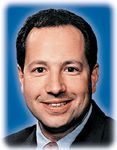Article
New Roth 401(k) will eliminate income restrictions
Contributions to HSA accounts are made on a tax-deductible basis and can be made by the employee, employer, or both.

A Roth IRAs have become an extremely popular option for those who prefer the unique advantage of being able to withdraw funds during their retirement years on a tax-free basis, as opposed to traditional IRAs where withdrawals are taxed as ordinary income. The only real downside to Roth IRAs is that contributions are made on an after-tax basis and are not tax deductible like traditional IRAs are.
Unfortunately, most urologists have not been able to use Roth IRAs due to their relatively high income levels. Roth IRA eligibility phases out between $95,000 and $110,000 for single filers and between $150,000 and $160,000 for married taxpayers filing a joint tax return. Starting next year, however, highly compensated individuals who are currently not allowed to contribute to Roth IRAs, as well as younger workers expecting to be in higher tax brackets during their retirement years, will be able to take advantage of a new type of tax-advantaged savings plan called the "Roth 401(k)."
Contributions for Roth IRAs in 2006 are limited to a maximum of $4,000 for taxpayers under the age of 50 years, and $5,000 for those 50 years of age and older. The Roth 401(k) maximum contribution level, on the other hand, will be subject to much more generous elective salary deferral limits. Beginning in 2006, workers under age 50 will be able to contribute up to $15,000, while workers age 50 and older will be able to contribute as much as $20,000 in the new Roth 401(k) plan.
At that point, an employee currently contributing to a traditional 401(k) plan would have the option of simply having their contributions diverted to a Roth version of the plan. That election would affect the amount of take-home salary because the contributions will be made on an after-tax basis, as opposed to pre-tax contributions made into a traditional 401(k) plan.
While all of this appears quite straightforward, there are a few nuances to consider prior to making the switch:
It is also important to understand that you cannot simply assume that your plan will be amended to allow after-tax Roth contributions. Employers should contact their plan administrators to determine the feasibility of adding the Roth feature. Interested employees should inform their employers that this is an option they would like to see included in next year's retirement plan structure.





